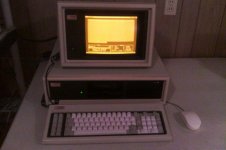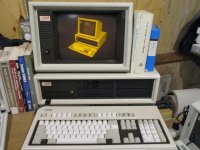resman
Veteran Member
I checked the devsys documentation and I am about 98.5% certain that you should have "asx" and that it should run on an 8088/8086 system.
If all that you want to do is to poke a few i/o ports to tweak the hardware settings that should be sufficient.
It does, indeed, come with asx. I'm just not sure what syntax it expects. I tried some basic AT&T style mnemonics, but it gives syntax error on anything resembling x86 code.
My other experiments involved OpenWatcom, JWasm, and Turbo C++ 1.0. First, I installed OpenWatcom and attempted building itself. I picked the wasm project and built it for DOS16. I transferred the object files to Xenix and attempted to link them, but the Watcom compiler puts in an OMF record type that the Xenix linker doesn't understand (type B2). My next attempt was to take the JWasm project that extends the wasm project and supports more compilers. I tried Turbo C++ 1.0 because I could take an object file generated by that compiler and link it with Xenix correctly. Unfortunately, JWasm uses newer constructs that break Turbo C++.
At this point, I've invested waaayyyy too much time in this. I may have to punt on getting a native i86 assembler for Xenix.
Dave...



